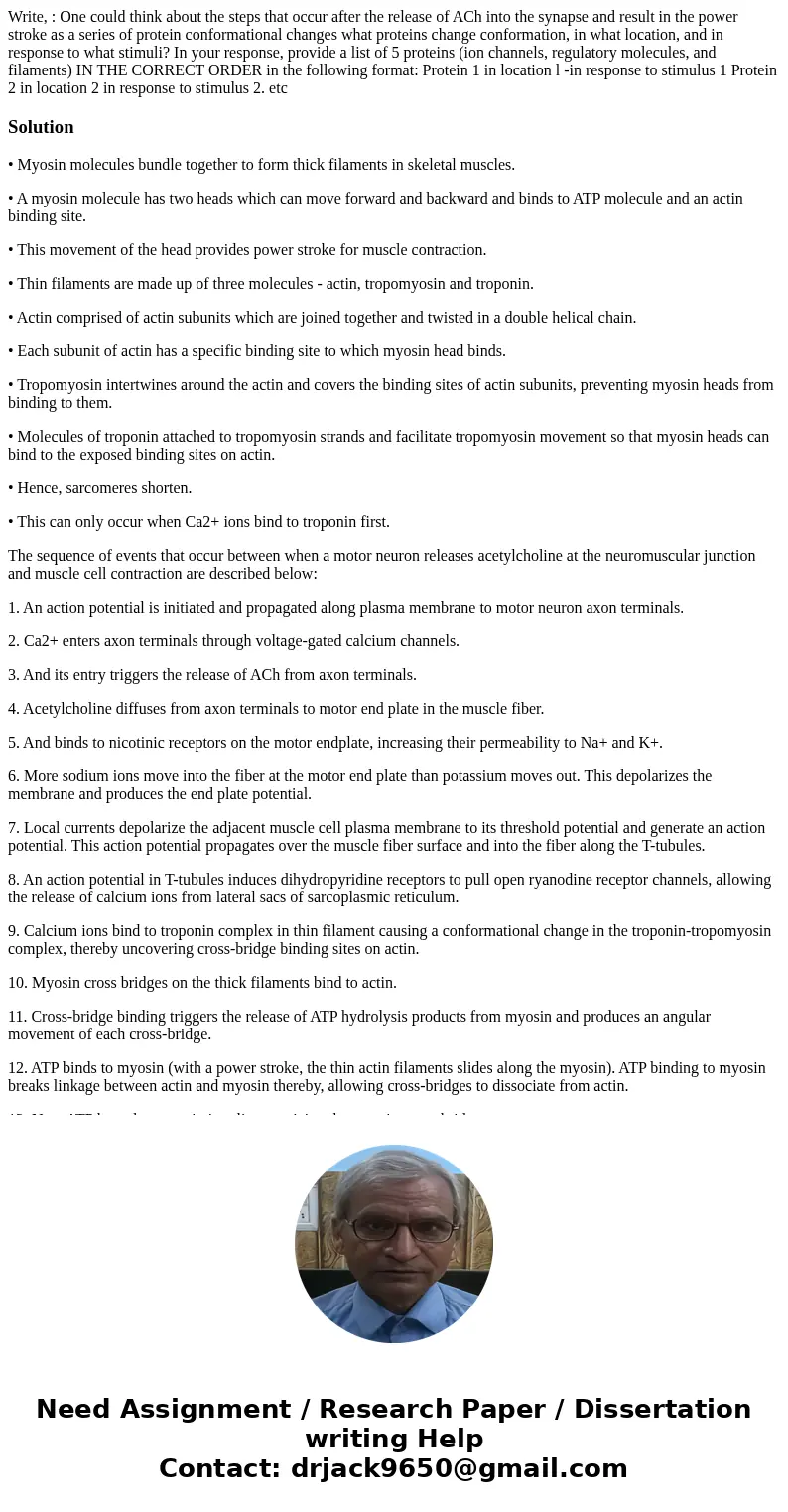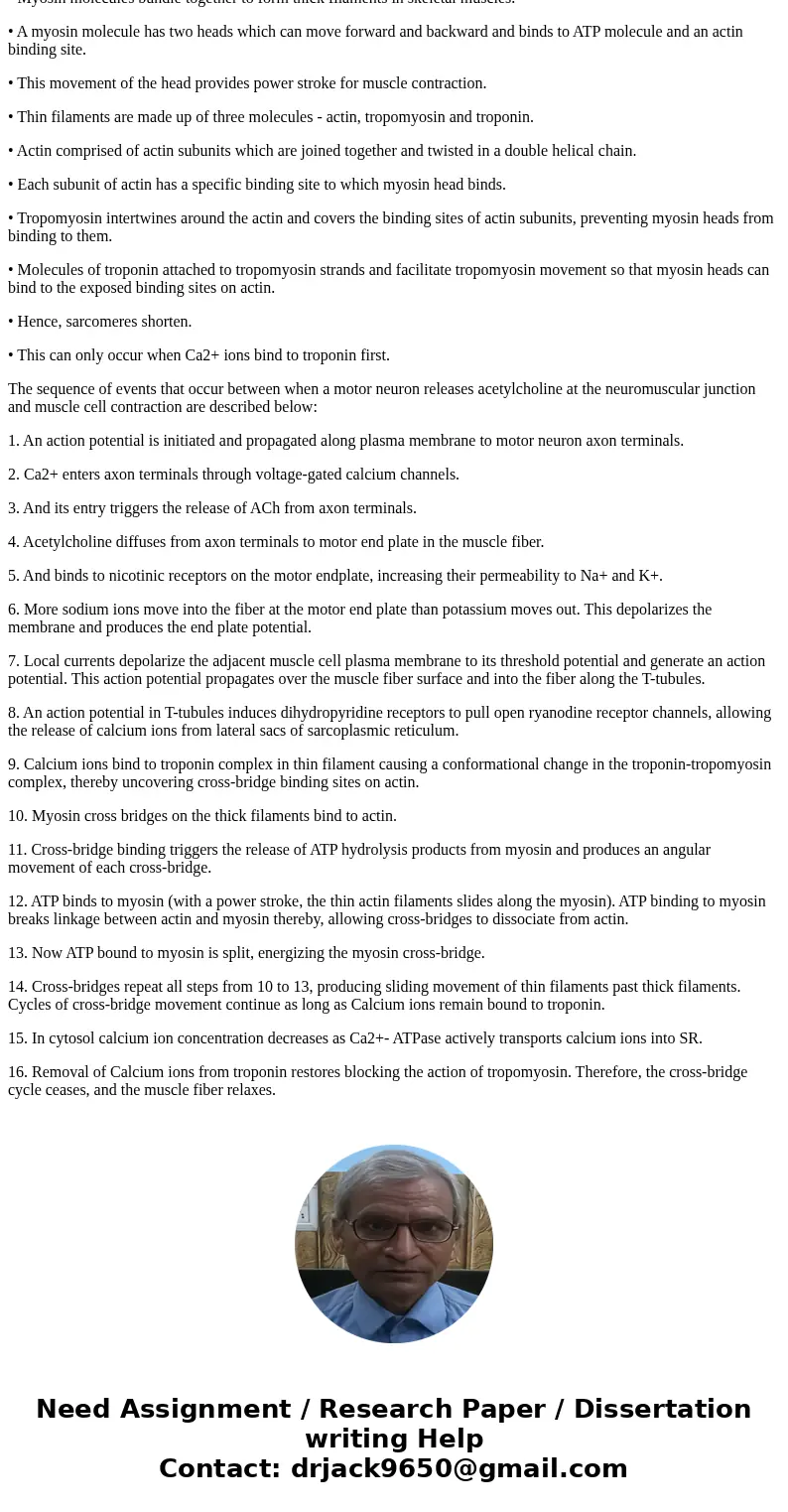Write One could think about the steps that occur after the
Solution
• Myosin molecules bundle together to form thick filaments in skeletal muscles.
• A myosin molecule has two heads which can move forward and backward and binds to ATP molecule and an actin binding site.
• This movement of the head provides power stroke for muscle contraction.
• Thin filaments are made up of three molecules - actin, tropomyosin and troponin.
• Actin comprised of actin subunits which are joined together and twisted in a double helical chain.
• Each subunit of actin has a specific binding site to which myosin head binds.
• Tropomyosin intertwines around the actin and covers the binding sites of actin subunits, preventing myosin heads from binding to them.
• Molecules of troponin attached to tropomyosin strands and facilitate tropomyosin movement so that myosin heads can bind to the exposed binding sites on actin.
• Hence, sarcomeres shorten.
• This can only occur when Ca2+ ions bind to troponin first.
The sequence of events that occur between when a motor neuron releases acetylcholine at the neuromuscular junction and muscle cell contraction are described below:
1. An action potential is initiated and propagated along plasma membrane to motor neuron axon terminals.
2. Ca2+ enters axon terminals through voltage-gated calcium channels.
3. And its entry triggers the release of ACh from axon terminals.
4. Acetylcholine diffuses from axon terminals to motor end plate in the muscle fiber.
5. And binds to nicotinic receptors on the motor endplate, increasing their permeability to Na+ and K+.
6. More sodium ions move into the fiber at the motor end plate than potassium moves out. This depolarizes the membrane and produces the end plate potential.
7. Local currents depolarize the adjacent muscle cell plasma membrane to its threshold potential and generate an action potential. This action potential propagates over the muscle fiber surface and into the fiber along the T-tubules.
8. An action potential in T-tubules induces dihydropyridine receptors to pull open ryanodine receptor channels, allowing the release of calcium ions from lateral sacs of sarcoplasmic reticulum.
9. Calcium ions bind to troponin complex in thin filament causing a conformational change in the troponin-tropomyosin complex, thereby uncovering cross-bridge binding sites on actin.
10. Myosin cross bridges on the thick filaments bind to actin.
11. Cross-bridge binding triggers the release of ATP hydrolysis products from myosin and produces an angular movement of each cross-bridge.
12. ATP binds to myosin (with a power stroke, the thin actin filaments slides along the myosin). ATP binding to myosin breaks linkage between actin and myosin thereby, allowing cross-bridges to dissociate from actin.
13. Now ATP bound to myosin is split, energizing the myosin cross-bridge.
14. Cross-bridges repeat all steps from 10 to 13, producing sliding movement of thin filaments past thick filaments. Cycles of cross-bridge movement continue as long as Calcium ions remain bound to troponin.
15. In cytosol calcium ion concentration decreases as Ca2+- ATPase actively transports calcium ions into SR.
16. Removal of Calcium ions from troponin restores blocking the action of tropomyosin. Therefore, the cross-bridge cycle ceases, and the muscle fiber relaxes.


 Homework Sourse
Homework Sourse